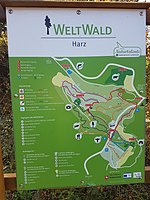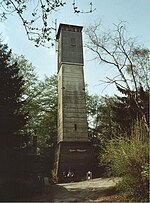Bad Grund
Göttingen district geography stubsSpa towns in GermanyTowns in Lower SaxonyTowns in the Harz

Bad Grund (Harz) is a town in the district of Göttingen, in Lower Saxony, Germany. It is situated in the western Harz, approx. 7 km west of Clausthal-Zellerfeld, and 10 km north of Osterode am Harz. Bad Grund is also the name of the former Samtgemeinde ("collective municipality") Bad Grund, of which Bad Grund formed part. It was disbanded in March 2013 and replaced by the Einheitsgemeinde Bad Grund.
Excerpt from the Wikipedia article Bad Grund (License: CC BY-SA 3.0, Authors, Images).Bad Grund
Ratsweg, Bad Grund
Geographical coordinates (GPS) Address Nearby Places Show on map
Geographical coordinates (GPS)
| Latitude | Longitude |
|---|---|
| N 51.811388888889 ° | E 10.238333333333 ° |
Address
Ratsweg 11
37539 Bad Grund (Bad Grund)
Lower Saxony, Germany
Open on Google Maps






